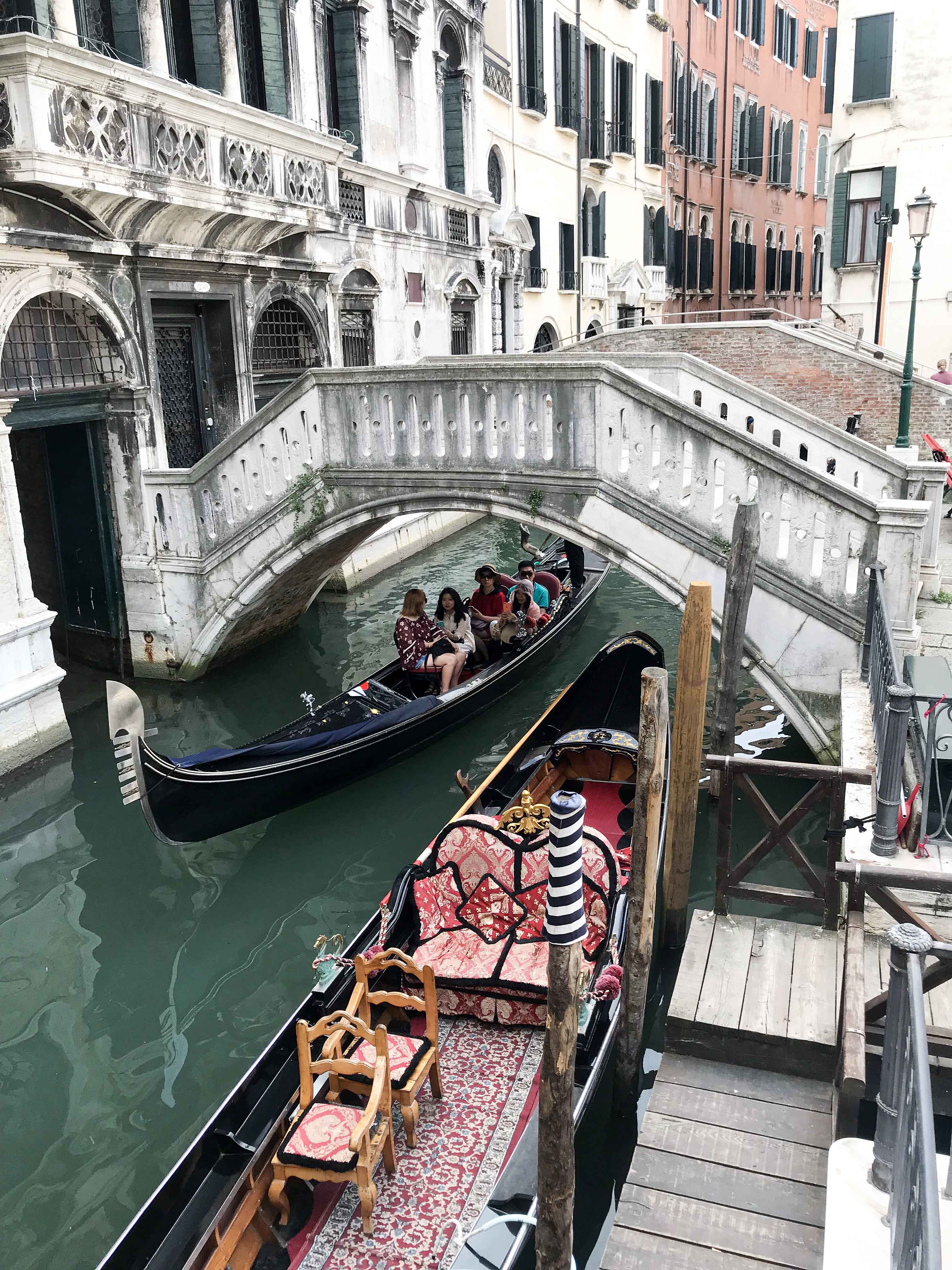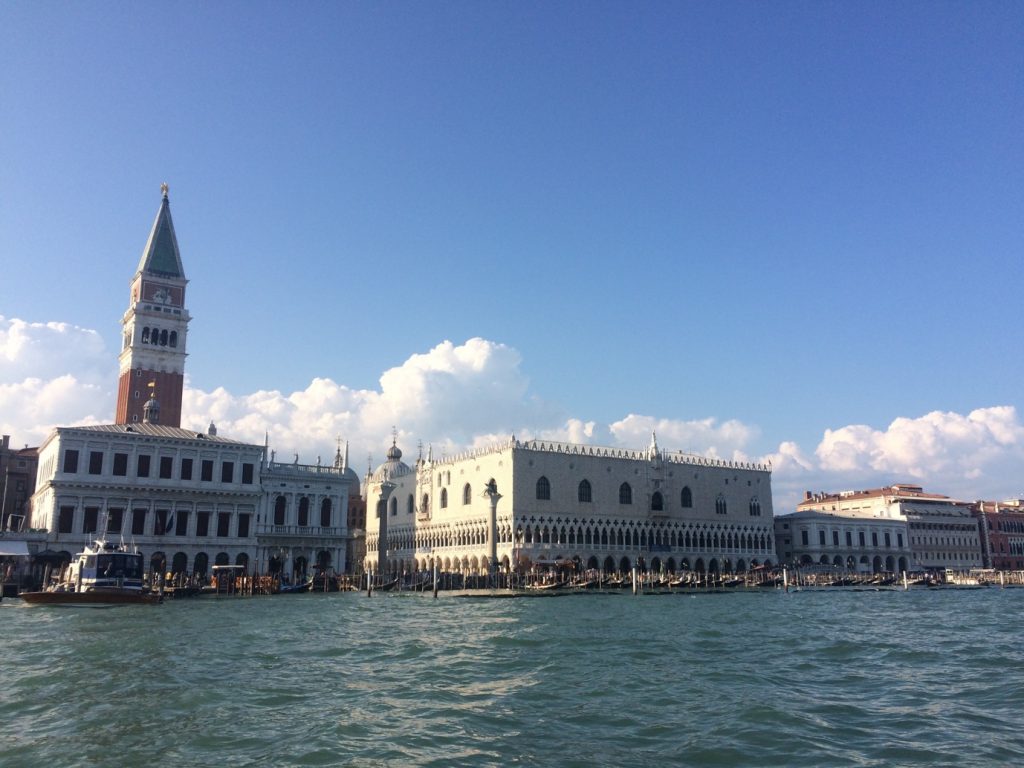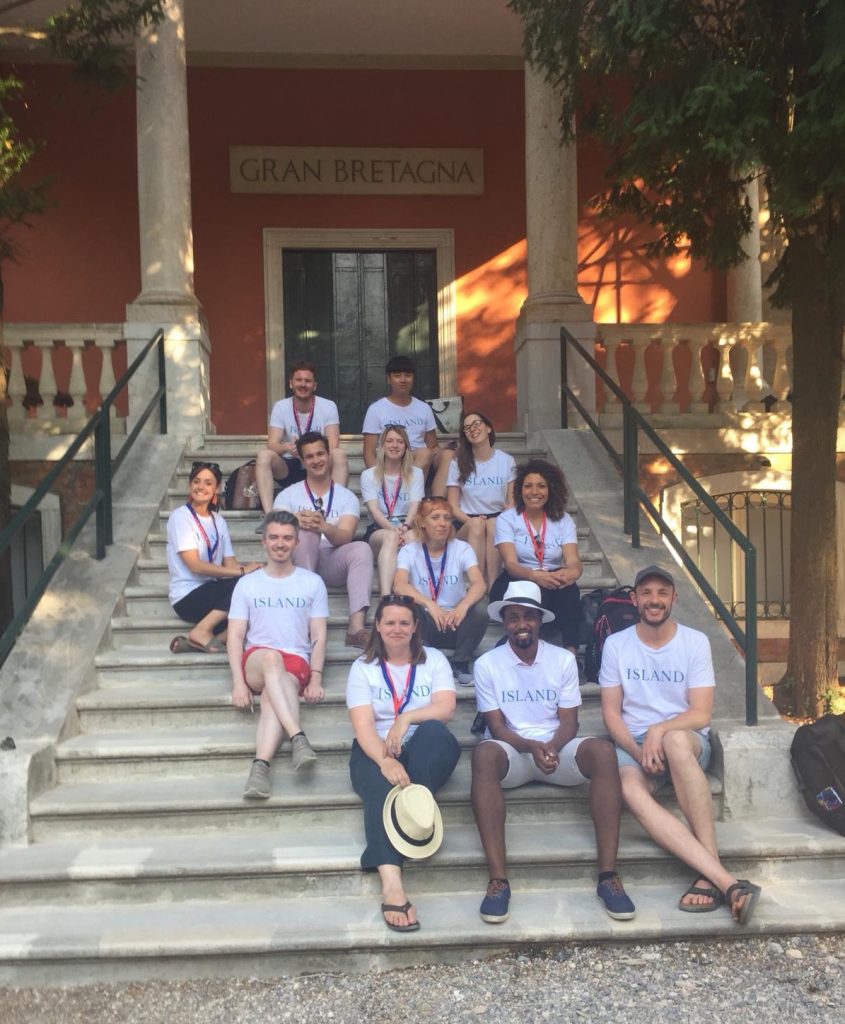In 2019, BA History of Art student Patricia Yaker Ekall was one of Birkbeck’s British Council Fellows in Venice. In this blog, she shares her experiences in ‘The Floating City’ and what she learned from the trip.

My time as a research fellow at the Venice art Biennale was an incredible experience that will stay with me for many years. With Venice, one typically thinks of the lagoon and its zany effect on perception (really, it’s like being on a giant float, often at risk, thanks to the bustle of the city, of falling into the seasoned turquoise waters). Venetian dining is  famed for its cicchetti and gelato and the beloved spritz. The historical landmarks, with their height and ornamental expressions of astonishing beauty, are also of course part of Venice’s reputation as a ‘must-visit’ destination. And, while the city is a wonderful representation of the value of tradition and heritage, Venice is equally known for its modern and contemporary art.
famed for its cicchetti and gelato and the beloved spritz. The historical landmarks, with their height and ornamental expressions of astonishing beauty, are also of course part of Venice’s reputation as a ‘must-visit’ destination. And, while the city is a wonderful representation of the value of tradition and heritage, Venice is equally known for its modern and contemporary art.
The Peggy Guggenheim Collection, at Palazzo Venier dei Leoni, boasts works by Jackson Pollock and Alberto Giacometti, giants among the assemblage of terrific artworks that shaped 20th-century art. With Venice being an artistic city, there are countless workshops dealing in everything from mask-making to pottery. But, bias allowing, I learned the most from the very reason I was there: the Venice Biennale, the showcase for international contemporary art that attracts thousands of visitors to Venice every other year.
My chance to be part of the Biennale was thanks to a Birkbeck/British Council Venice Fellowship, which funded a month in Venice in September, where I worked as a steward in the exhibition’s British Pavilion while pursuing my own research. The renowned event may have been in its 58th edition and 123rd year, but it was my first time attending. I tried to have as few expectations as possible, which stood me in good stead as the experience was full of unexpected elements. For example, I did not expect the dramatic variation in reactions to the art work in the British Pavilion. Cathy Wilkes’ installation drew on arte povera (a movement that subverts the commercialisation of art founded in 1960s Italy, ironically). It touched on themes of motherhood, poverty and death, and was not understood (let alone loved) by everyone. This took me by surprise, as I’d assumed the visitors would be surer of their own perspectives. Yet, alarmingly often, we were asked to explain Wilkes’ work. Since it was made deliberately inexplicable, our own interpretations would have to suffice. Another one of my assumptions was that everyone in Venice would support the Biennale and, save for a bit of context-focussed  research conducted just before I travelled, I was not prepared for all the ways the event is challenged when it comes to issues around sustainability and Venice’s economic state.
research conducted just before I travelled, I was not prepared for all the ways the event is challenged when it comes to issues around sustainability and Venice’s economic state.
It seemed to me that every aspect of this tiny jewel, Venice, was up for passionate debate. Such conversations ranged from questioning of the Biennale’s effect (and dare I say relevance) in relation to the locals, to the issue of excess tourism and the tensions between the old and new and, glaringly at times, the rich and the poor. These were the conversations that a lot of the pavilion’s visitors – be they Italian, or from France, Japan, Germany or the UK – felt at ease in bringing to us, while we as art enthusiasts were primed and keen to discuss instead materials, style and the artwork’s contextual background! Though somewhat unexpected, I very much enjoyed this part of the experience. It added another dimension to my take on the power of contemporary art and all its demands. I enjoyed these roiling debates cocooned in artistic excellence!
From the orientation evening that informed us of the fellowship, to the day before we left for England, Birkbeck and the British Council were on hand to keep us informed. I was particularly touched by the program’s flexibility and understanding in the face of the unexpected. There was a real sense of openness of conversation and options, especially when it came to planning our individual research projects. If there was a change in direction which meant more resources would be needed, for example, they would not hesitate to put us in touch with the relevant modes of help.
Moreover, the fellowship program was structured such that we were introduced to the other people we’d be working with at an early stage to facilitate an easier melding process on arrival in Venice. Now, most would probably say the same of their own group but, mine was filled with the most incredible, laid-back but focused people. From early-career Oxbridge grads, to third wave career professionals who used their research practice to inform their doctorate, there was a diverse mix of interesting people. We had one thing in common: our love of art, its histories and its contemporary practices. In a way, the Biennale was the ideal hub for all of these keen minds to meet – which was, of course, the intention.
Further information:


 Upon my return to London, our group of fellows continued the discourse and organised an exhibition in August, held at a temporary space in Shoreditch. And it didn’t stop there; The British Council is keen to organise another show in the new year, featuring the research outcomes of Venice Fellows. I didn’t imagine that so many further opportunities would come along from this encounter.
Upon my return to London, our group of fellows continued the discourse and organised an exhibition in August, held at a temporary space in Shoreditch. And it didn’t stop there; The British Council is keen to organise another show in the new year, featuring the research outcomes of Venice Fellows. I didn’t imagine that so many further opportunities would come along from this encounter.